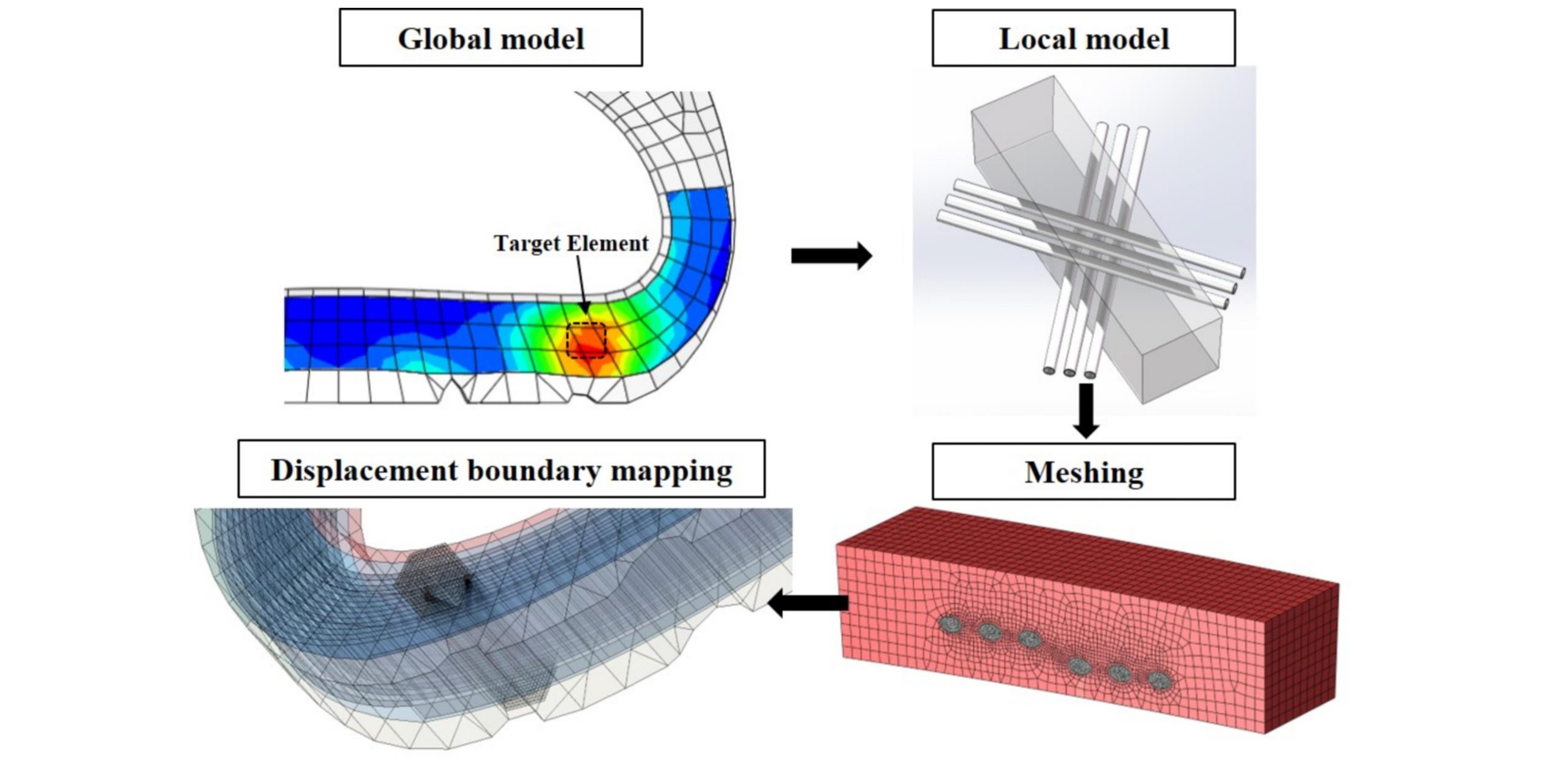Project Description
Abstract:
The durability of tires is commonly predicted by combining finite element simulation and rubber fatigue life models. However, this method cannot accurately predict the delamination of aircraft tires with multi-layer cord/rubber laminated composite structures caused by the debonding of the cord/rubber interface. In this study, a newly designed method was used to investigate the effects of temperature and nonrelaxing conditions on the fatigue response at the cord/rubber interface. For the 54 sets of fatigue life data obtained, 25 samples were randomly selected as the training set, and a support vector machine algorithm was used to establish a model of the fatigue life at the cord/rubber interface. The validity of the model was verified using the remaining 29 samples. Based on finite element simulation of the cord/rubber interface fatigue test, the quantitative relationship between the fatigue parameter of the interface, cracking energy density (CED), and equivalent force was determined. After completing the finite element simulation for a certain type of bias aircraft tire under steady-state rolling conditions, a global-sub model approach was used to refine the modeling of the cord/rubber interface in the dangerous area of the tire shoulder, from which the fatigue evolution of the interface fatigue parameter, CED, and equivalent force were determined. In the tire fatigue mileage test, the slip ring was used to determine the internal and surface temperatures of the tire under different loading conditions, providing temperature conditions for predicting the durability life of tires. The durability life prediction data from the proposed cord/rubber interface fatigue life model were compared with the results of the fatigue mileage test. The durability prediction method based on the fatigue evolution at the cord/rubber interface can accurately determine the failure location of the tire, with the predicted values being about half of the measured values, enabling effective forecasting of the initiation of interface damage. [PDF]

